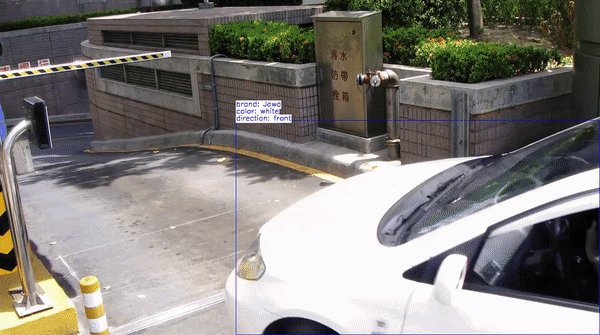System reads license plates with 94% accuracy. And it’s fast.

Fake it till you make it
In the absence of a sufficient number of marked-up datasets that meet the requirements of training the plate number recognition model, it was decided to generate a synthetic dataset. With augmentations, such as rotation, blurring and darkening, as well as various sizes and colorings of the license plate, font style, and distance between characters

Pseudo-labeling
Having about half a million images with plate numbers isn't enough? Although we have the exact number, we didn’t had bounding boxes around the characters to use that in training process. To solve these type of problems, we used semi-supervised learning pseudo-labelling technique, which is used both labelled data and unlabelled data. We managed to evaluate our models on unlabelled data, and for those images, where pseudo-labelling was correct (about 60-90% depending on the difficulty of the dataset) we collect them for further training. In this manner, we’ve moved out from generated 300k generated dataset with tuning them by 5 thousand real images, to more than 400k real annotated data for training
Night mode - when only a license plate is enough
Our algorithms can recognize license plates even without a car. And they don’t detect timestamps on video or random objects with text allowing you to get the most important information in hard conditions

The complete system
As we produced the car parameters from the input image, we aggregated the results and placed them in a container. By using multiple object tracking (MOT) system can ackowledge vehicles through time and gain more accuracy through majority vote from per frame recognitions.
Results
End-to-end approach of the Neural Networks predicts color, direction, brand and even brand/model of the analyzing vehicle.
We don’t pick nice looking recognitions
Here all the benchmarks solutions was tested on
License plate detection
| Applied solutions / datasets | AOLP AC(%) | AOLP LE(%) | AOLP RP(%) |
|---|---|---|---|
| ours | 95.58 | 93.97 | 94.29 |
| OpenALPR | 91.80 | 86.89 | 90.84 |
| 1st approach(with CNN I) | 93.53 | 89.83 | 86.58 |
| 1st approach(with CNN II) | 93.25 | 90.62 | 86.74 |
| 1st approach(with CNN I & II) | 93.97 | 92.87 | 87.73 |
| 2st approach(with global features only) | 90.50 | 91.15 | 83.98 |
| 2st approach(with both local and global features) | 94.85 | 94.19 | 88.38 |
License plate recognition
| Solutions / datasets | 2017-IWT4S-HDR_LP-dataset (%) | AOLP AC(%) | AOLP LE(%) | AOLP RP(%) |
|---|---|---|---|---|
| ours | 94.79 | 90.41 | 83.94 | 89.75 |
| OpenALPR | 57.73 | 86.04 | 77.98 | 85.71 |




















































